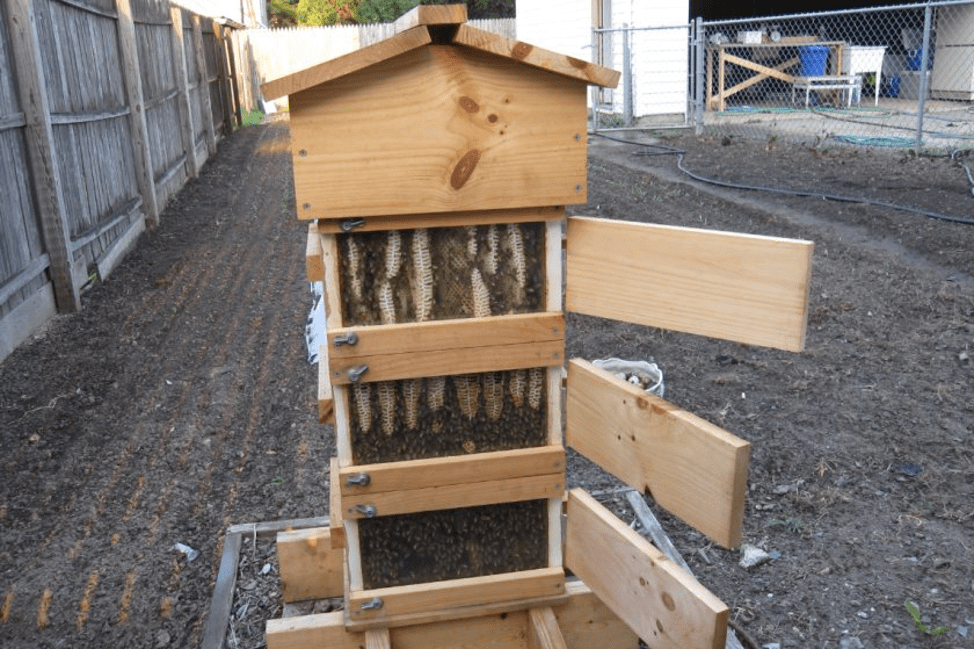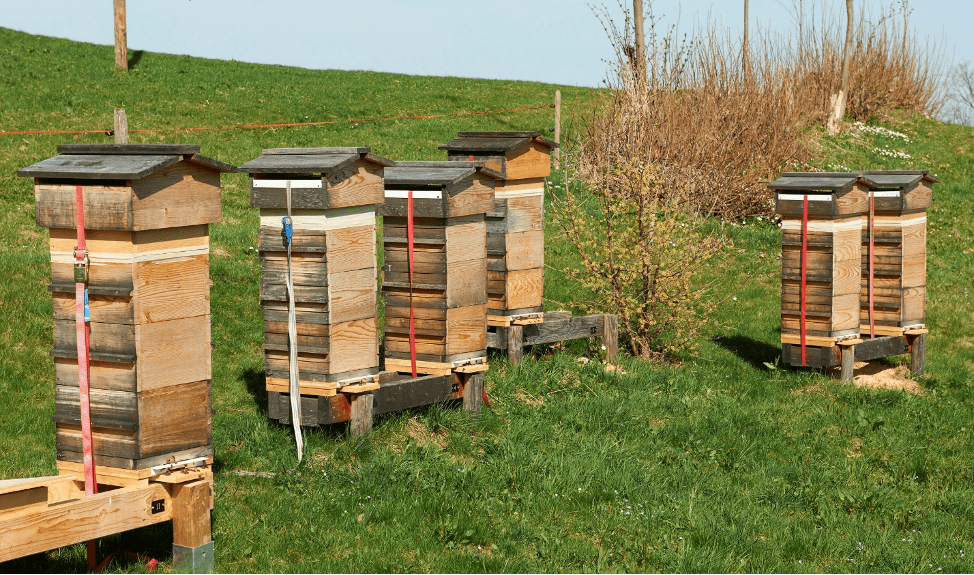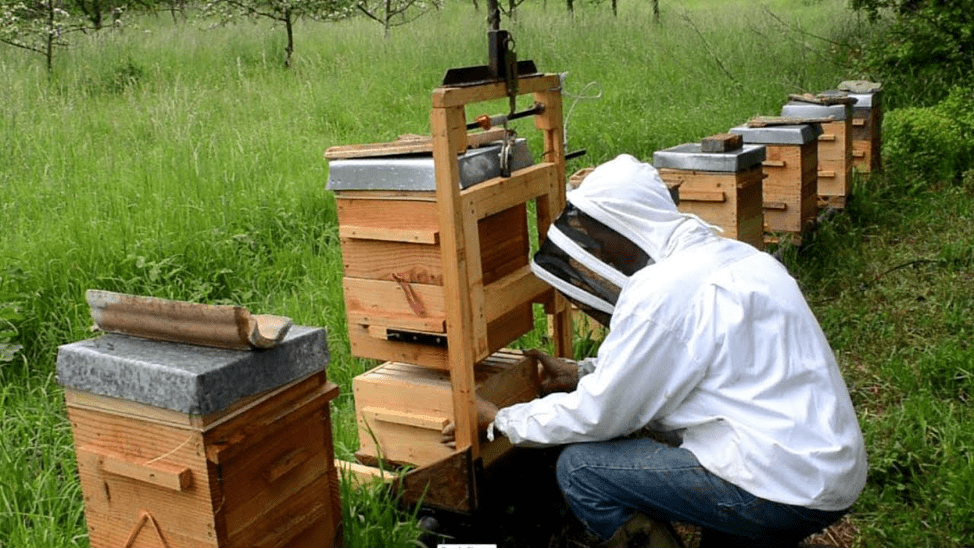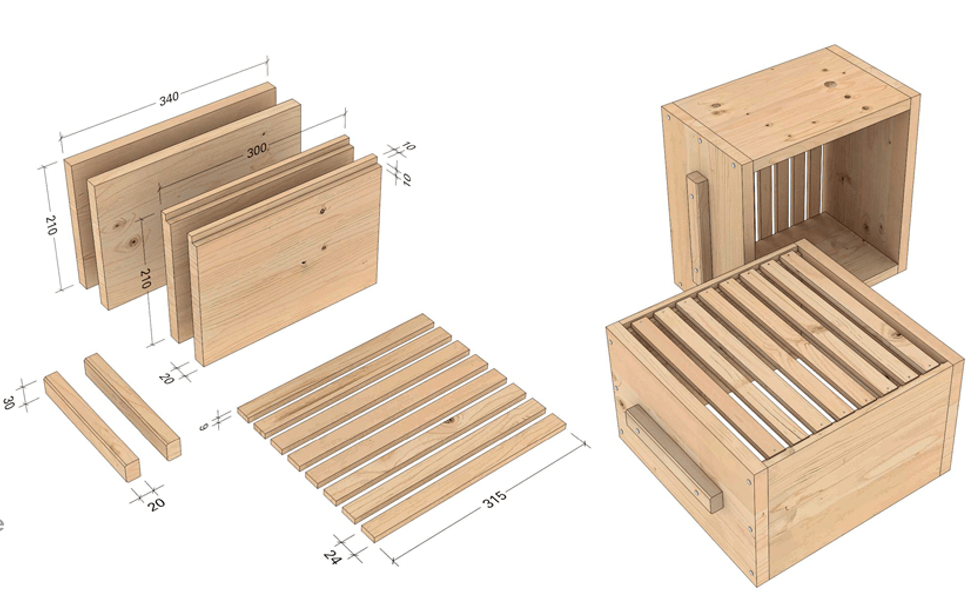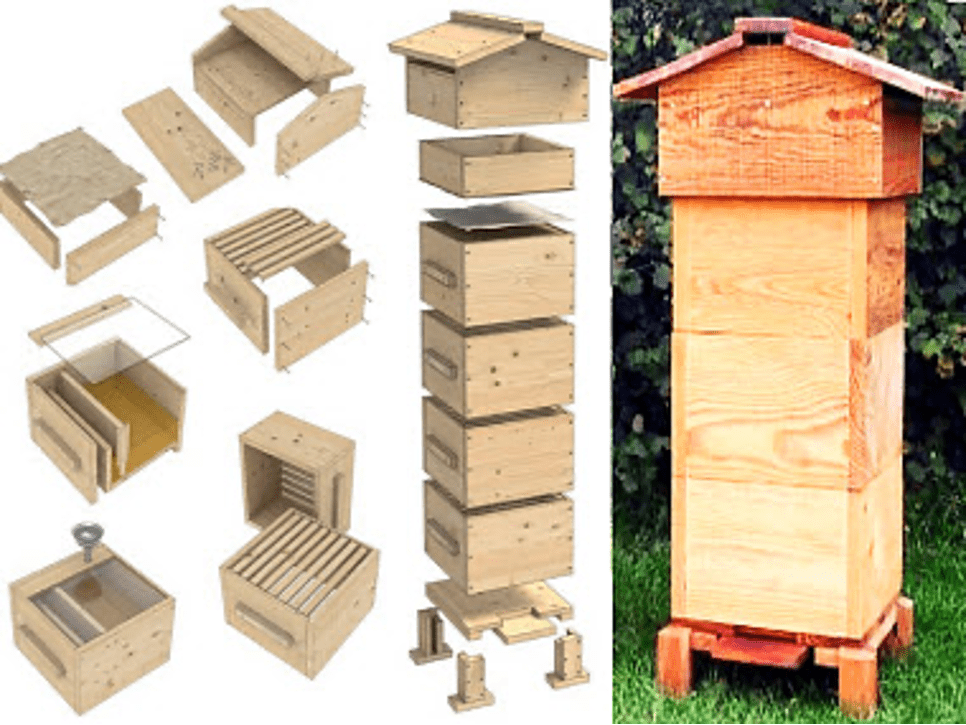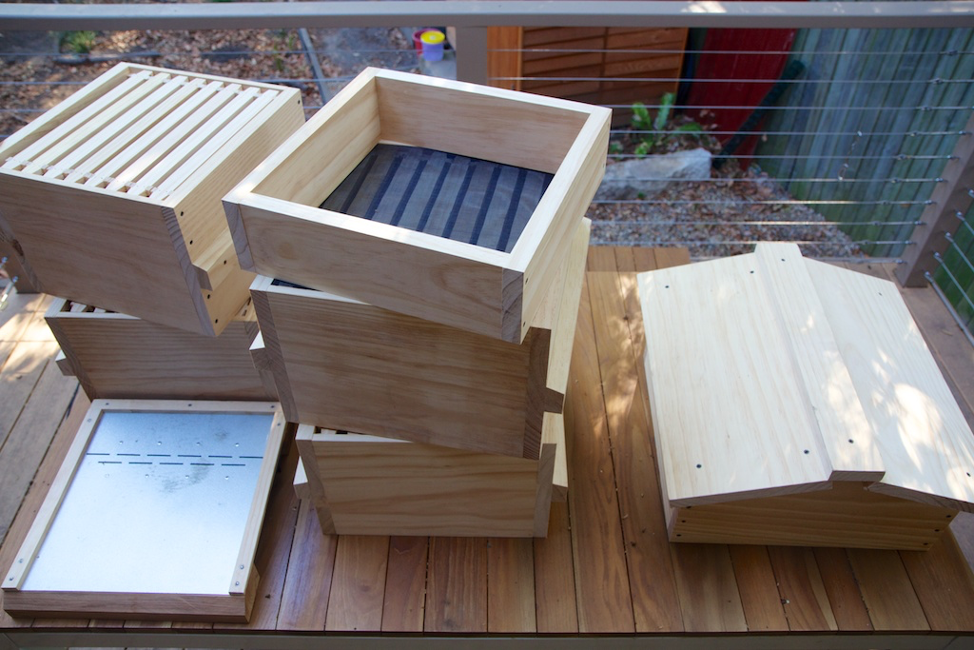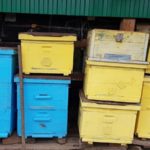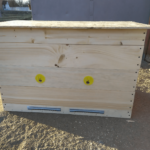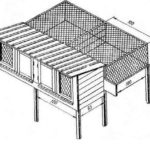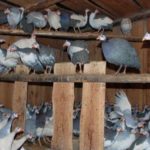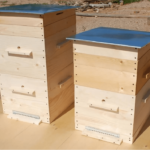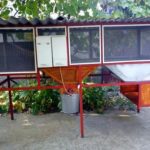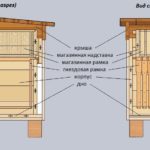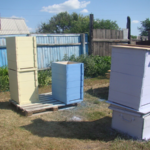Beekeepers use different types of bee houses. Each has its own advantages and disadvantages. Japanese bee hives are easy to assemble and have a simple honey collection process. The principle of operation is similar to the Varre variants, decks, bihive and some others. A novice beekeeper needs to become familiar with the principles of its operation and the manufacturing process at home.
Features of Japanese hives
This version of housing for insects differs in design, honey collection technology and some other principles of beekeeping. The following features are considered the main ones:
- the hive is assembled from several vertically located hives;
- a grate is placed in the upper part, leaving some space free;
- the arrangement of the frames allows the bees to move faster between the streets;
- there is no canvas, which is often installed in domestic bee houses.
Attention! The main feature is the formation of monolithic honeycombs, which are placed throughout the entire height of the insects’ home. If it is necessary to remove the body, the honeycombs are separated with a string, without fear of the collapse of the structure.
Advantages and disadvantages
The use of the Japanese version is characterized by the absence of frames, which means significant cost savings and exemption from some work. Other benefits include:
- the beekeeper does not need to assemble frame structures;
- no need to install wire;
- the inner body does not need to be waxed, the surface does not need to be cleaned of wax after collecting honey;
- the frames do not need to be prepared for wintering - disinfected, preserved honeycombs, or performed other actions.
When caring for and observing bees, you don’t need to look inside the house, which means you don’t have to disturb the bee family. Honey is extracted using a press. The disadvantages include the following:
- difficulties that may arise when introducing additional individuals;
- difficulties with selection or replacement of the uterus, formation of layering;
- The process of checking a bee colony for various diseases becomes difficult.
Some beekeepers use the method of annually adding additional individuals to bee colonies, which is not always suitable for novice beekeepers.
Dimensions and drawings
The standard parameters of a Japanese hive are 20 cm by 30 cm. If necessary, beekeepers can make adjustments to the characteristics of the usual design. For example, some beekeepers prefer the 30 cm by 30 cm option. Other sizes:
- height of one body – 15 cm;
- lattice located in the upper part - 5-6 slats of 3 cm each;
- the distance between the slats is from 0.5 cm to 1 cm.
In some cases, instead of slats, wire is used, which is allowed by the design of the bee house and does not contradict the principle of its manufacture. More details about sizes in the next video.
Parts and tools for manufacturing
To make a home for bees in the Japanese version, you need to prepare a workplace, as well as the following materials and tools:
- wood (it is advisable to choose dense species);
- wood slats or wire (depending on the beekeeper’s preferences);
- file, sandpaper, knife. Attention! In some cases, you will need a plane for the job. The boards must be fairly smooth. Notches and irregularities are not allowed because they can damage the legs or wings of insects;
- nails for fastening parts;
- hammer.
DIY making
To assemble a bee house, you need to follow several simple steps:
- prepare a drawing of the house;
- apply markings to the boards, saw and sand the parts;
- assemble the cases according to the selected dimensions (20 cm by 30 cm or 30 cm by 30 cm);
- elements are connected with nails;
- assemble a cross from slats or wire.
The assembly process is simple. It is necessary to carefully mark and cut. The roof is made at your own discretion - samples and options can be found in the presented images.
Rules for keeping bees in Japanese hives
To ensure a comfortable existence for insects and minimize the intervention of the beekeeper, it is necessary to take into account some features of keeping bees in Japanese hives. These include the following:
- expansion of the structure is carried out only from below - the honeycombs are lined up vertically by the bees, so it is possible to add an additional housing. Attention! Such separate blocks are installed in the spring. It is necessary to take into account the period of brood formation in a bee family, which depends on the breed of insects being bred and the region;
- in preparation for the winter period, some of the compartments are removed (lower elements) - a sufficient height for winter is about 40 cm, for example, you can leave three compartments 15 cm high;
- beekeepers recommend leaving one entrance - for a vertical hive structure, one entrance will be enough; it is located in the lower part;
- if the summer is hot, you can increase the size of the entrance or make the bottom mesh;
- it is necessary to cut the housings with wire, threading it between the sections;
- Some beekeepers prefer to reduce the height of bee houses to 10 cm - this way they can check the fullness of the honeycombs so as not to cut “at random”.
This type of bee house is not common in Russia, but a novice beekeeper is recommended to try different types of houses to be able to compare technologies and results. The Japanese hive allows you to create conditions that are as close to natural as possible.Features of the content are described in detail in the following video.
The Japanese version of the bee house differs in design from the usual hives (for example, Dadanovsky). There are no usual frames, and insects build honeycombs vertically. Vertical hives have certain advantages and disadvantages, which are best learned from your own experience.

